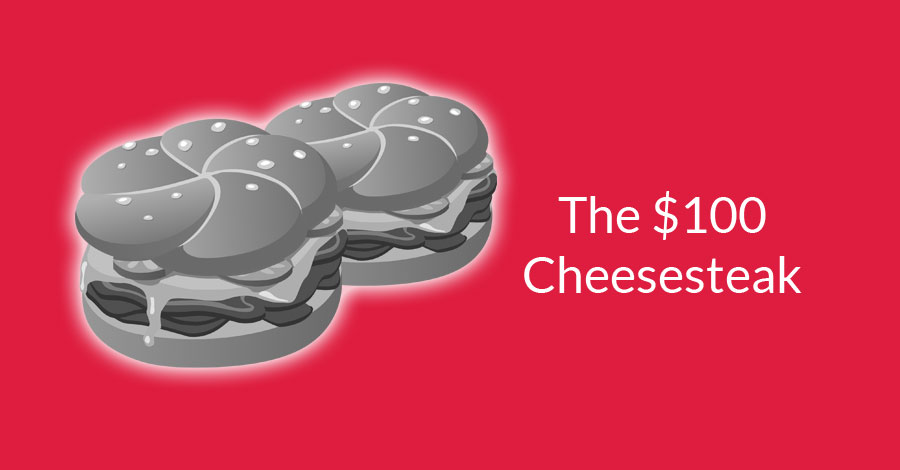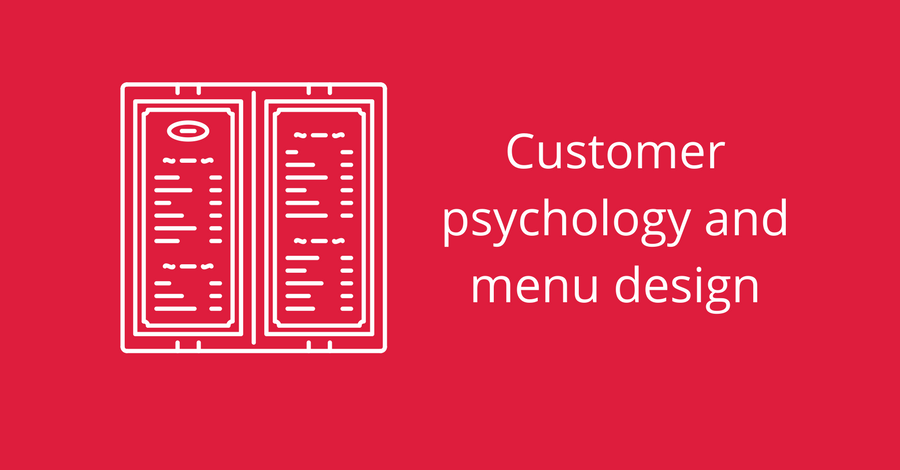Why one restaurant charges $100 for a cheesesteak sandwich

The humble Philadelphia cheesesteak sandwich is an American classic. It is not a complex recipe: some bread, some steak, some cheese. Rarely do all the ingredients fit into the name of a dish. It is also available everywhere.
So, how does a small steakhouse located in Philadelphia charge $100 for one? That is the question that the owners of Barclay Prime asked themselves. They found a way: and rocketed their restaurant into the spotlight in the process.
No ordinary sandwich
It goes without saying that this is no ordinary cheesesteak. It starts with a freshly baked roll (baked in-house, of course) and features Wagyu rib eye and foie gras and is finished off with plenty of truffles.
Oh, and it comes with half a bottle of vintage champagne.
Does anyone buy it? It turns out that they do. Often, groups will get one to share between them. Doing this brings the cost down while granting everyone the bragging rights.
But the truth is that Barclay Prime do not have $100 cheesesteak on their menu because they think it will be a good money-spinner. That’s not what most of their customers are there for.
But, as I bang on about in my book Why Restaurants Fail, the success of a joint has little to do with the food. It is about whether a restaurant understands customer psychology and marketing. And Barclay Prime do.
The ultimate promotional tool
In Contagious: Why Things Catch On, professor of marketing Johan Berger talks about how to make a marketing strategy go viral. He uses Barclay Prime as a case study because it is one of the best examples of how a restaurant can use a single dish to create a massive wave.
People like to share interesting stories. It gives them social currency. And a restaurant charging $100 for a cheesesteak is an interesting story. It is hard not to tell people about it.
It is not just the novelty of it that helps it go viral. The dish fulfils many different points on the imaginary checklist of things that make something contagious.
It provokes emotion. In this case, it is almost a sense of awe. “Wow, someone is charging $100 for a cheesesteak and people are buying it!” There is shock value there: you can’t hear that and not perk up.
Being able to say you have had the cheesesteak makes you look like a big shot. And when it comes down to basic psychology, most of us are subconsciously trying to impress the opposite sex with displays of wealth.
People are proud to have eaten it. They take photos of it and share it on their Facebook, Instagram and Twitter. Celebrities turn up to try it which then provides even more credibility.
And the media start writing about it, too. In the age of 24-hour news, the machine is ever hungry for anything they can fill some air time or column inches with. This story gave them that.
Critically, you cannot tell the story without talking about Barclay Prime. Nobody would be interested in “I ate it at a restaurant”. You have to say which restaurant it is. And that gets Barclay Prime talked about by everybody.
How to make your food go viral
Making great food might get your restaurant talked about. A few people might tell their friends that they had a good time and the food was nice.
If you want more people to talk about your food, make it really bad. The adage goes that people will tell three people about a good experience, but ten people about a bad experience. The additional promotion might not be so good for business, though.
But if you want everybody to be talking about your restaurant, you need to come up with something that has the potential to go viral. It’s not random: there are rules to it. Barclay Prime understood those rules, and if you can learn them too, you have the same opportunity.
What are the rules?
Your food, or the experience, needs to invoke emotion. And this needs to be a high-arousal emotion. People who are full and content are not in a high state of arousal. They do not rush to share photos or tell their friends about it.
High-arousal emotions include surprise, delight and awe. How can you work these into your food? It’s no easy challenge. People enjoy great food, but they talk about novel food.
Here are some more examples:
- The Fat Duck offers “multi-sensory food” including an egg and bacon ice cream and dishes that include audio elements.
- Red’s True Barbecue makes a doughnut burger. It is a burger but served inside a doughnut, rather than a bread bun.
Critically, you have to deliver on your promise, too. Your food has to be both amazing and novel. The $100 cheesesteak works because it is so surprising: but also tastes divine thanks to the Wagyu beef and truffles.
Summary
Charging $100 for a cheesesteak was a bold move for Barclay Prime. But it paid off big time. People bought it, but more importantly, people talked about it. Rather than spending on advertising, people were paying them.
If you want your food to go viral, it needs to provoke emotion. You need to fill people with awe, surprise and delight. And you need to deliver on that promise. If you do, people will tell their friends about it.
